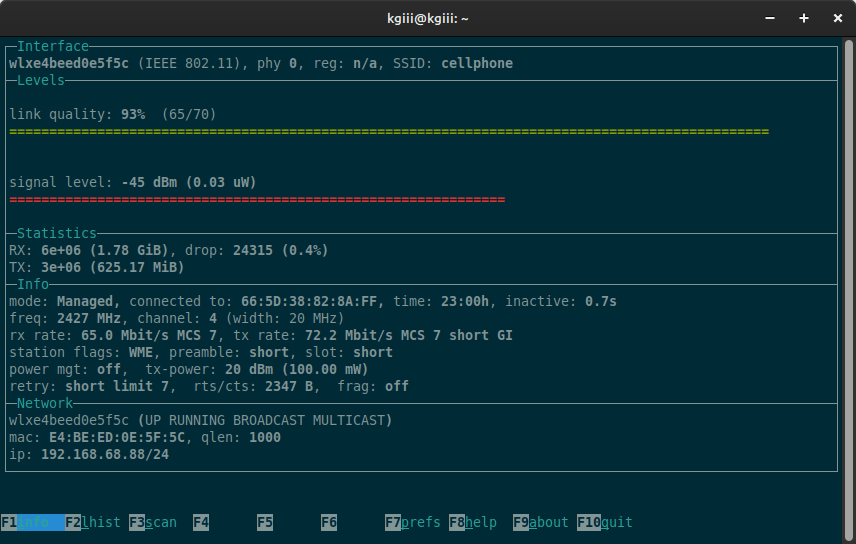In the world of open-source software, the term “Linux” is often used as a catch-all for an entire operating system. However, Linux itself is just the kernel—the core component that communicates between your computer’s hardware and its software. To create a fully functional operating system, this kernel is bundled with a vast collection of software, tools, and a user interface. This complete package is what we call a Linux distribution, or “distro.” Understanding the nuances between distributions is fundamental for any developer, system administrator, or tech enthusiast looking to harness the power and flexibility of the Linux ecosystem.
The choice of a distribution can significantly impact everything from system stability and software availability to the user experience and the learning curve. Whether you’re setting up a powerful Linux Server for a web application, configuring a secure environment for Linux DevOps, or simply customizing a personal desktop, the distro you choose is your foundation. This comprehensive guide will explore the anatomy of a Linux distribution, compare the major families, and delve into the advanced practices that define modern System Administration, from kernel management to containerization in the cloud.
The Anatomy of a Linux Distribution
Every Linux distribution, despite its unique characteristics, is built from a common set of core components. Understanding these building blocks is the first step toward mastering any Linux environment. They work in concert to provide the powerful, stable, and versatile experience users expect.
The Linux Kernel: The Heart of the System
At the absolute center is the Linux Kernel. This masterful piece of software is responsible for managing the system’s most critical resources. It handles process scheduling, memory management, provides device drivers for hardware, and manages file systems. The kernel’s version number is significant; it indicates the features, hardware support, and security patches included. Distributions make crucial decisions about which kernel version to ship. Some, like Ubuntu’s Long-Term Support (LTS) releases, prioritize stability by sticking with a well-tested LTS kernel for years, backporting security fixes. Others, like Arch Linux, adopt a rolling-release model, providing users with the latest mainline kernel versions almost as soon as they are deemed stable. This difference in kernel management strategy is a primary factor that defines a distro’s character and target audience.
The GNU Core Utilities and Shell
The kernel alone is not enough to interact with a system. This is where the GNU Project’s tools come in, which is why some purists refer to the OS as GNU/Linux. These include the essential Linux Commands you use daily in the Linux Terminal, such as ls, cp, mv, grep, and the compiler suite gcc used for C Programming Linux. The most important component is the shell, typically Bash (Bourne Again SHell), which provides the command-line interface for users to execute commands and write powerful scripts for Linux Automation.
The Package Management System
Perhaps the most significant differentiator between distribution families is the package manager. This system handles the installation, updating, and removal of all software on the system, managing complex dependencies automatically. It’s the backbone of a distro’s software ecosystem.
- Debian-based (Debian, Ubuntu): Use the APT (Advanced Package Tool) with commands like
apt-getandapt. They manage.debpackages. - Red Hat-based (RHEL, Fedora, CentOS): Use DNF (Dandified YUM) and its predecessor YUM. They manage
.rpmpackages. - Arch-based (Arch Linux, Manjaro): Use Pacman, known for its speed and simplicity.
Here’s how you would update your system and install a popular system monitoring tool like htop on each of these systems:
# On Debian or Ubuntu
sudo apt update
sudo apt install htop
# On Fedora, CentOS Stream, or RHEL
sudo dnf check-update
sudo dnf install htop
# On Arch Linux
sudo pacman -Syu
sudo pacman -S htopChoosing Your Flavor: A Tour of Major Distribution Families
With hundreds of distributions available, choosing one can be daunting. However, most can be grouped into a few major families, each with a distinct philosophy and approach. Your choice will depend on your use case, whether it’s for a desktop, a web server, or a container host.





Linux command line interface on monitor – Monitor Your Wi-Fi In Linux • Linux Tips
Debian-Based: The Rock of Stability
Debian Linux is one of the oldest and most influential distributions, renowned for its commitment to free software and its legendary stability. Its “stable” branch undergoes rigorous testing, making it a top choice for servers where reliability is paramount. Ubuntu, a derivative of Debian, has become arguably the most popular desktop and server distribution. It offers a more modern, user-friendly experience and a predictable release cycle with Long-Term Support (LTS) versions that are supported for five years. This makes the Ubuntu Tutorial a common starting point for newcomers.
Red Hat-Based: The Enterprise Standard
Red Hat Linux, specifically Red Hat Enterprise Linux (RHEL), is the dominant force in the corporate world. It’s a commercial distribution known for its robust security features (like SELinux enabled by default), extensive support, and certification for enterprise hardware and software. Fedora Linux serves as its community-driven, cutting-edge upstream, a place to test new technologies that may eventually make their way into RHEL. Following the shift of CentOS to CentOS Stream, distributions like Rocky Linux and AlmaLinux have emerged to provide 1:1 binary-compatible, community-supported alternatives to RHEL.
Arch-Based: The Bleeding Edge
Arch Linux follows a different philosophy: simplicity, modernity, and user-centricity. It provides a minimal base system and expects the user to build it up from scratch, installing only what they need. It’s a rolling-release distribution, meaning it has no version numbers; a single command (sudo pacman -Syu) keeps the entire system continuously updated with the latest software, including the kernel. This makes it a favorite among developers and power users who want maximum control and the newest features. The Arch User Repository (AUR) is a massive community-driven repository that provides scripts to easily build and install software not available in the official repos.
To automate tasks across these different families, you can use Bash Scripting to detect the distribution and run the appropriate commands.
#!/bin/bash
# A simple script to install the Nginx web server on different distros
# Check for /etc/os-release file
if [ -f /etc/os-release ]; then
. /etc/os-release
OS=$ID
else
echo "Cannot determine the operating system."
exit 1
fi
echo "Detected OS: $OS"
case "$OS" in
ubuntu|debian)
sudo apt update && sudo apt install -y nginx
;;
fedora|centos|rhel|almalinux|rocky)
sudo dnf install -y nginx
;;
arch)
sudo pacman -S --noconfirm nginx
;;
*)
echo "Unsupported distribution: $OS"
exit 1
;;
esac
echo "Nginx installation attempted."System Administration and Customization Across Distributions
While the core principles of Linux Administration are universal, the specific tools and configurations can vary. Mastering these differences is key to becoming a proficient administrator in a heterogeneous environment.
Kernel and System Information
Regardless of the distro, you can always check your kernel version with uname -r. For more detailed distribution information, the modern standard is to check the /etc/os-release file. This is far more reliable than older methods like lsb_release.
# Check the running Linux Kernel version
uname -r
# Display detailed OS information
cat /etc/os-releaseThis information is crucial for debugging, checking for compatibility, and understanding the system’s current state. For example, knowing your kernel version helps you determine if a specific security vulnerability (CVE) applies to your system.
Service Management with systemd








Linux command line interface on monitor – Learn the Mac OS X Command Line
In the past, service management was a fragmented landscape with different init systems (SysVinit, Upstart). Today, systemd has become the de facto standard across nearly all major distributions, including Debian, Ubuntu, Fedora, RHEL, and Arch. This unification has greatly simplified System Administration. The systemctl command is your universal tool for controlling services (daemons).
# Enable Nginx to start on boot
sudo systemctl enable nginx
# Start the Nginx service immediately
sudo systemctl start nginx
# Check the status of the Nginx service
sudo systemctl status nginx
# Stop the service
sudo systemctl stop nginxSecurity and Networking
All Linux distributions provide powerful networking and security tools, but their default configurations differ. Ubuntu uses UFW (Uncomplicated Firewall) as a user-friendly frontend for the complex iptables firewall. In contrast, RHEL and Fedora use firewalld and have SELinux enabled by default for mandatory access control, providing a more granular and restrictive security posture out of the box. Understanding these defaults is critical for securing a Linux Server and configuring Linux Networking and Linux SSH access correctly.
The Modern Linux Landscape: DevOps, Cloud, and Containers
Linux is the undisputed king of the cloud and the backbone of the DevOps movement. Its open nature, stability, and powerful kernel features have made it the ideal platform for modern infrastructure.
Linux in the Cloud and DevOps
Major cloud providers like AWS Linux and Azure Linux offerings are built entirely on Linux. Whether you’re spinning up an EC2 instance or an Azure VM, you’re almost certainly using a Linux distribution. In this environment, manual administration is impractical. This is where Linux Automation tools like Ansible, Chef, and Puppet shine. They allow you to define your infrastructure as code and manage thousands of servers across different distributions seamlessly.
Containers and Kubernetes








The rise of Linux Docker and Kubernetes has revolutionized software deployment. This technology is built directly on top of Linux kernel features like cgroups (for resource limiting) and namespaces (for isolation). A Docker Tutorial will always start with installing the Docker engine on a Linux host. This has led to the creation of minimalist, specialized distros like Alpine Linux and CoreOS (now Fedora CoreOS), designed specifically to be lightweight, secure hosts for a Kubernetes Linux cluster. These are often referred to as Container Linux.
Python for System Administration
While Shell Scripting is great for simple tasks, Python Linux integration is unparalleled for more complex automation. Python’s extensive standard library and third-party modules make it the language of choice for Python System Admin and Python DevOps tasks. You can manage files, call system commands, interact with APIs, and automate cloud infrastructure, all with one versatile language.
Here’s a simple Python Scripting example that uses the subprocess module to check disk usage, providing a more structured output than the raw command.
import subprocess
import json
def get_disk_usage():
"""
Runs the 'df' command with JSON output and returns the parsed data.
Requires a modern version of 'df' that supports the --output and --output-format=json flags.
"""
try:
# Execute the df command to get disk usage info in JSON format
result = subprocess.run(
['df', '--output=source,fstype,size,used,avail,pcent', '--output-format=json'],
capture_output=True,
text=True,
check=True
)
data = json.loads(result.stdout)
print(json.dumps(data, indent=2))
return data
except (subprocess.CalledProcessError, FileNotFoundError, json.JSONDecodeError) as e:
print(f"An error occurred: {e}")
print("Falling back to standard 'df -h'...")
subprocess.run(['df', '-h'])
return None
if __name__ == "__main__":
print("--- Checking Disk Filesystem Usage ---")
get_disk_usage()Conclusion: Your Journey with Linux
The world of Linux distributions is vast and diverse, offering a solution for nearly any computing challenge. The key takeaway is that there is no single “best” distribution—only the one that is best for your specific needs. A Debian or Ubuntu LTS server provides a stable, predictable foundation for critical applications. Fedora offers a glimpse into the future of enterprise Linux, while Arch Linux provides a highly customized, bleeding-edge experience for the enthusiast.
Your journey begins with understanding the core components: the powerful Linux Kernel, the essential GNU toolchain, and the pivotal package manager. From there, explore the major families and experiment. Set up virtual machines, install different distros, and see which workflow, community, and philosophy resonates with you. By mastering the fundamentals of the command line, service management, and modern tools like Docker and Ansible, you can leverage the full power of any Linux distribution to build, deploy, and manage the next generation of software.




